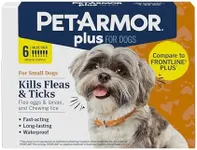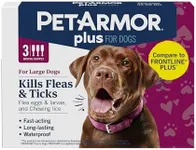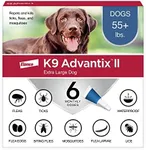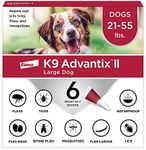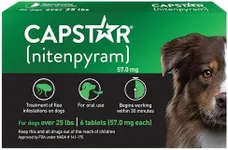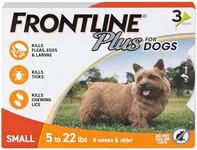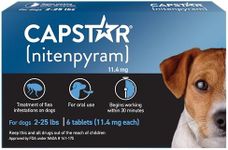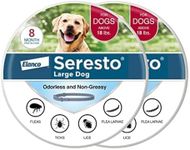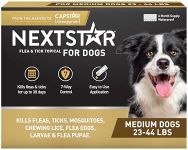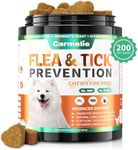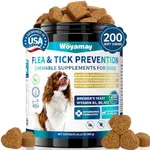Buying Guide for the Best Otc Flea Meds For Dogs
Choosing the right over-the-counter (OTC) flea medication for your dog is crucial for their health and comfort. Fleas can cause a range of issues from mild itching to severe allergic reactions and even transmit diseases. When selecting a flea medication, it's important to consider several key specifications to ensure you pick the best fit for your dog's needs. Here are the main factors to consider and how to navigate them.Active IngredientsThe active ingredients in flea medications are the chemicals that kill or repel fleas. Common active ingredients include fipronil, imidacloprid, and permethrin. It's important to choose a product with an active ingredient that is effective against fleas and safe for your dog. If your dog has had reactions to certain chemicals in the past, avoid those ingredients. For general use, fipronil and imidacloprid are often recommended for their effectiveness and safety.
Form of MedicationFlea medications come in various forms such as topical treatments, oral tablets, collars, and shampoos. Topical treatments are applied directly to the dog's skin and are effective for about a month. Oral tablets are ingested and can provide quick relief, often within hours. Flea collars offer long-term protection, usually lasting several months. Shampoos can provide immediate relief but are generally not long-lasting. Choose the form that best fits your dog's lifestyle and your convenience. For instance, if your dog dislikes baths, a collar or oral tablet might be a better option.
Duration of EffectivenessThe duration of effectiveness refers to how long the medication will protect your dog from fleas. Some treatments last for a month, while others can last up to eight months. If you prefer not to reapply treatments frequently, a longer-lasting option like a flea collar might be more convenient. However, if you need flexibility or are dealing with a severe infestation, a monthly topical or oral treatment might be more effective.
Age and Weight of DogFlea medications are often formulated based on the age and weight of the dog. Puppies and smaller dogs require different dosages than larger, adult dogs. Always check the product label to ensure it is appropriate for your dog's age and weight. Using the wrong dosage can be ineffective or even harmful. If your dog is a puppy or a senior, look for products specifically designed for their age group.
Additional Parasite ProtectionSome flea medications also protect against other parasites like ticks, lice, and mites. If your dog is at risk for multiple types of parasites, a combination product might be more convenient and cost-effective. Check the product label to see what other parasites it protects against and consider your dog's exposure risk. For example, if you live in an area with a high tick population, a product that also repels ticks would be beneficial.
Ease of ApplicationThe ease of application can vary between products. Some dogs may be more tolerant of certain application methods than others. For example, topical treatments can be messy and may require your dog to stay dry for a period, while oral tablets can be hidden in food. Consider your dog's temperament and your own comfort with applying the medication. If you have a squirmy dog, a flea collar or oral medication might be easier to manage.
